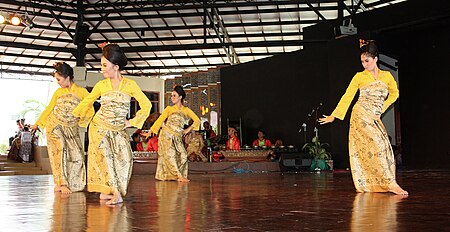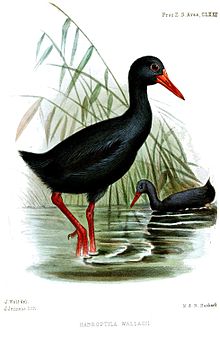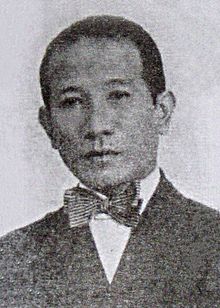Selamat Datang / Welcome to the Indonesian Portal


Indonesia, officially the Republic of Indonesia, is a country in Southeast Asia and Oceania between the Indian and Pacific oceans. It consists of over 17,000 islands, including Sumatra, Java, Sulawesi, and parts of Borneo and New Guinea. Indonesia is the world's largest archipelagic state and the 14th-largest country by area, at 1,904,569 square kilometres (735,358 square miles). With over 279 million people, Indonesia is the world's fourth-most-populous country and the most populous Muslim-majority country. Java, the world's most populous island, is home to more than half of the country's population.
Indonesia is a presidential republic with an elected legislature. It has 38 provinces, of which nine have special autonomous status. The country's capital, Jakarta, is the world's second-most-populous urban area. Indonesia shares land borders with Papua New Guinea, East Timor, and the eastern part of Malaysia, as well as maritime borders with Singapore, Vietnam, Thailand, the Philippines, Australia, Palau, and India. Despite its large population and densely populated regions, Indonesia has vast areas of wilderness that support one of the world's highest levels of biodiversity.
Indonesia consists of thousands of distinct native ethnic and hundreds of linguistic groups, with Javanese being the largest. A shared identity has developed with the motto "Bhinneka Tunggal Ika" ("Unity in Diversity" literally, "many, yet one"), defined by a national language, cultural diversity, religious pluralism within a Muslim-majority population, and a history of colonialism and rebellion against it. The economy of Indonesia is the world's 16th-largest by nominal GDP and the 7th-largest by PPP. It is the world's third-largest democracy, a regional power, and is considered a middle power in global affairs. The country is a member of several multilateral organisations, including the United Nations, World Trade Organization, G20, and a founding member of the Non-Aligned Movement, Association of Southeast Asian Nations, East Asia Summit, D-8, APEC, and the Organisation of Islamic Cooperation. (Full article...)
Selected article -
The invisible rail, Wallace's rail, or drummer rail (Habroptila wallacii) is a large flightless rail that is endemic to the island of Halmahera in Northern Maluku, Indonesia, where it inhabits impenetrable sago swamps adjacent to forests. Its plumage is predominantly dark slate-grey, and the bare skin around its eyes, the long, thick bill, and the legs are all bright red. Its call is a low drumming sound which is accompanied by wing-beating. The difficulty of seeing this shy bird in its dense habitat means that information on its behaviour is limited.
Recorded dietary items include sago shoots and insects, and it also swallows small stones to help break up its food. It is apparently monogamous, but little else is known of its courtship behaviour. The only known nest was a shallow bowl in the top of a rotting tree stump that was lined with wood chips and dry leaves. The two young chicks were entirely covered in black down typical of precocial newly hatched rails. The estimated population of 3,500–15,000 birds and the restricted range mean that the invisible rail is classified as vulnerable by the International Union for Conservation of Nature (IUCN). Habitat loss has occurred through the harvesting of sago and conversion of the wetlands to rice cultivation, and the rail is eaten by local people. The described nest was in an area frequented by local villagers, so the rail may be more adaptable to habitat changes than had been thought. (Full article...)Selected picture

Photographer: Gunkarta; License: Creative Commons CC-BY-SA
Selected foods and cuisines -

Related portals
Religions in Indonesia
Southeast Asia
Other countries
Selected biography -
Abisin Abbas (Indonesian: [aˈbisɪn aˈbas]; 26 February 1902 – 20 October 1961), better known by his pseudonym Andjar Asmara ([anˈdʒar asˈmara]), was a dramatist and filmmaker active in the cinema of the Dutch East Indies. Born in Alahan Panjang, West Sumatra, he first worked as a reporter in Batavia (modern-day Jakarta). He became a writer for the Padangsche Opera in Padang, where he developed a new, dialogue-centric style, which later spread throughout the region. After returning to Batavia in 1929, he spent over a year as a theatre and film critic. In 1930 he joined the Dardanella touring troupe as a writer. He went to India in an unsuccessful bid to film his stage play Dr Samsi.
After leaving Dardanella in 1936, Andjar established his own troupe. He also worked at a publishers, writing serials based on successful films. In 1940 he was asked to join The Teng Chun's company, Java Industrial Film, helping with marketing and working as a director for two productions. After the Japanese occupation, during which time he stayed in theatre, Andjar made a brief return to cinema. He directed three films in the late 1940s and wrote four screenplays, which were produced as films in the early 1950s. He published a novel, Noesa Penida (1950). Afterward he worked for the remainder of his life writing serials based on local films and publishing film criticism. Historians recognise him as a pioneer of theatre and one of the first native Indonesian film directors, although he had little creative control of his productions. (Full article...)Did you know -
- ... that National Hero of Indonesia Oerip Soemohardjo (pictured) attended a girls' school as a child to improve his temperament?
- ... that the king of the Mataram Sultanate during the First Java War used the reconstruction of a terrace as an excuse for not providing soldiers?
- ... that due to the sexually explicit content of Saman, Ayu Utami's debut novel, her mother refused to read it to her father?
More Did you know (auto generated)

- ... that in 1993, Indonesia's home affairs minister Yogie Suardi Memet used thugs to disrupt the opposition Indonesian Democratic Party's national congress?
- ... that nearing the end of his tenure as mayor of Tegal, Indonesia, Adi Winarso took part in a talkshow with his former political competitors?
- ... that as part of his 2014 reelection campaign, Indonesian legislator Eriko Sotarduga provided free haircuts and motorcycle repairs?
- ... that only six years after its 2016 discovery, the Meratus blue flycatcher was found being sold in Indonesian songbird markets?
- ... that 90 percent of Indonesia's village-owned enterprises are not legal entities, hampering their ability to attract investors or open bank accounts?
- ... that after his tenure ended in 1964, Ipik Gandamana would be the last Indonesian minister of home affairs to be a civilian until 2009?
In this month
- 1 June 1945 – President Sukarno first outlines his idea of Pancasila, now Indonesia's state philosophy
- 7 June 1999 – Indonesia's first free and fair national elections since 1955 take place, but no party gains a majority
- 10 June 2009 – The Suramadu Bridge (pictured), the longest in Indonesia, opens
- 17 June 1864 – The first railway track in Indonesia was laid between Semarang and Tanggung, Central Java
- 27 June 1970 – President Sukarno becomes the first Indonesian president to die; he is buried in Blitar, East Java
General images
Topics
Categories
New articles
Rules | Match log | Results page (for watching) | Last updated: 2024-06-12 20:36 (UTC)
Note: The list display can now be customized by each user. See List display personalization for details.
- Fifth Force (Indonesia) (edit | talk | history | links | watch | logs | tools) by Iwaqarhashmi (talk · contribs · new pages (61)) started on 2024-06-12, score: 78
- Tafsir Ibnu Abbas (edit | talk | history | links | watch | logs | tools) by Yusuf Asar Yathar (talk · contribs · new pages (8)) started on 2024-06-12, score: 52
- 2013 in religion (edit | talk | history | links | watch | logs | tools) by MtPenguinMonster (talk · contribs · new pages (2)) started on 2024-06-12, score: 21
- Achmadi Hadisoemarto (edit | talk | history | links | watch | logs | tools) by Kaliper1 (talk · contribs · new pages (1)) started on 2024-06-12, score: 91
- Falling In Love Like In Movies (edit | talk | history | links | watch | logs | tools) by Androptrnt (talk · contribs · new pages (4)) started on 2024-06-12, score: 43
- National Food Agency (edit | talk | history | links | watch | logs | tools) by TheBrowniess (talk · contribs · new pages (13)) started on 2024-06-12, score: 43
- Bahasa tanah (edit | talk | history | links | watch | logs | tools) by Elijah Mahoebessy (talk · contribs · new pages (4)) started on 2024-06-06, score: 139
- Du Croo & Brauns (edit | talk | history | links | watch | logs | tools) by Bob1960evens (talk · contribs · new pages (3)) started on 2024-06-11, score: 32
- Aji Raden Sayid Mohammad (edit | talk | history | links | watch | logs | tools) by Faldi00 (talk · contribs · new pages (16)) started on 2024-06-11, score: 129
- Bidadari Surgamu (edit | talk | history | links | watch | logs | tools) by DannyMalhotra (talk · contribs · new pages (2)) started on 2024-06-11, score: 43
- 2024–25 ASEAN Club Championship group stage (edit | talk | history | links | watch | logs | tools) by Fau Tzy (talk · contribs · new pages (6)) started on 2024-06-10, score: 29
- Mauresmo Hinoke (edit | talk | history | links | watch | logs | tools) by Conam-san (talk · contribs · new pages (3)) started on 2024-06-10, score: 46
- 2024 Asian Men's U20 Volleyball Championship (edit | talk | history | links | watch | logs | tools) by Alifahmad14 (talk · contribs · new pages (1)) started on 2024-06-09, score: 63
- Australian Eastern Mission (edit | talk | history | links | watch | logs | tools) by ITBF (talk · contribs · new pages (8)) started on 2024-06-09, score: 35
- Kuntilanak 2 (edit | talk | history | links | watch | logs | tools) by DareshMohan (talk · contribs · new pages (32)) started on 2024-06-08, score: 53
- Bahasa Tanah (edit | talk | history | links | watch | logs | tools) by Elijah Mahoebessy (talk · contribs · new pages (4)) started on 2024-06-06, score: 139
- 2023–24 Liga 3 (Indonesia) final (edit | talk | history | links | watch | logs | tools) by Fau Tzy (talk · contribs · new pages (6)) started on 2024-05-26, score: 163
- Wies van Groningen (edit | talk | history | links | watch | logs | tools) by MumphingSquirrel (talk · contribs · new pages (4)) started on 2024-06-08, score: 75
- 2024–25 Persija Jakarta season (edit | talk | history | links | watch | logs | tools) by Catalyszczowski (talk · contribs · new pages (1)) started on 2024-06-08, score: 160
- Niki discography (edit | talk | history | links | watch | logs | tools) by Nkon21 (talk · contribs · new pages (4)) started on 2024-06-08, score: 50
- Rich Brian discography (edit | talk | history | links | watch | logs | tools) by Nkon21 (talk · contribs · new pages (4)) started on 2024-06-08, score: 43
- Cultural impact of Dwiki Dharmawan (edit | talk | history | links | watch | logs | tools) by SarahJH07 (talk · contribs · new pages (1)) started on 2024-06-08, score: 42
- Bolaang (edit | talk | history | links | watch | logs | tools) by TentingZones1 (talk · contribs · new pages (2)) started on 2024-06-08, score: 22
- Rhotana (edit | talk | history | links | watch | logs | tools) by Bernhard Zelazny (talk · contribs · new pages (10)) started on 2024-06-07, score: 30
- Victor Jacob Koningsberger (edit | talk | history | links | watch | logs | tools) by Crisco 1492 (talk · contribs · new pages (26)) started on 2024-06-07, score: 32
- List of IBL Indonesia annual scoring leaders (edit | talk | history | links | watch | logs | tools) by Skyggestadium (talk · contribs · new pages (3)) started on 2024-06-07, score: 73
- Abdul Wahid (politician) (edit | talk | history | links | watch | logs | tools) by Faldi00 (talk · contribs · new pages (16)) started on 2024-06-07, score: 93
- João Ferrari (edit | talk | history | links | watch | logs | tools) by Heavenlyjump (talk · contribs · new pages (4)) started on 2024-06-07, score: 61
- Fernandinho (footballer, born September 1994) (edit | talk | history | links | watch | logs | tools) by Heavenlyjump (talk · contribs · new pages (4)) started on 2024-06-07, score: 79
- God Said No World Tour (edit | talk | history | links | watch | logs | tools) by Oscarozzi (talk · contribs · new pages (3)) started on 2024-06-06, score: 38
- 2018 Malang mayoral election (edit | talk | history | links | watch | logs | tools) by Juxlos (talk · contribs · new pages (31)) started on 2024-06-06, score: 73
- Land language (edit | talk | history | links | watch | logs | tools) by Elijah Mahoebessy (talk · contribs · new pages (4)) started on 2024-06-06, score: 139
- Riza Herdavid (edit | talk | history | links | watch | logs | tools) by Juxlos (talk · contribs · new pages (31)) started on 2024-06-06, score: 93
- Mukomuko language (edit | talk | history | links | watch | logs | tools) by Cal1407 (talk · contribs · new pages (3)) started on 2024-06-05, score: 123
- 2024 South Bangka regency election (edit | talk | history | links | watch | logs | tools) by Juxlos (talk · contribs · new pages (31)) started on 2024-06-05, score: 83
- Nova Liana (edit | talk | history | links | watch | logs | tools) by Wakekigrand (talk · contribs · new pages (2)) started on 2024-06-05, score: 62
- Orang Pulo language (edit | talk | history | links | watch | logs | tools) by Cal1407 (talk · contribs · new pages (3)) started on 2024-06-05, score: 143
- 2011–12 NBL Indonesia season (edit | talk | history | links | watch | logs | tools) by Skyggestadium (talk · contribs · new pages (3)) started on 2024-06-05, score: 83
- 2020 South Tangerang mayoral election (edit | talk | history | links | watch | logs | tools) by Juxlos (talk · contribs · new pages (31)) started on 2024-05-29, score: 63
- Pura Rambut Siwi (edit | talk | history | links | watch | logs | tools) by Pueblo89 (talk · contribs · new pages (4)) started on 2024-06-04, score: 83
- Rankings of Southeast Asia Startups (edit | talk | history | links | watch | logs | tools) by Applaused (talk · contribs · new pages (4)) started on 2024-06-04, score: 63
- National Socialist Movement in the Dutch East Indies (edit | talk | history | links | watch | logs | tools) by Sartricis (talk · contribs · new pages (2)) started on 2024-06-04, score: 30
- Melati Tedja (edit | talk | history | links | watch | logs | tools) by Aestvoyage (talk · contribs · new pages (1)) started on 2024-06-04, score: 151
- All-IBL Indonesian Team (edit | talk | history | links | watch | logs | tools) by Skyggestadium (talk · contribs · new pages (3)) started on 2024-06-04, score: 108
- Nusa Penida Balinese language (edit | talk | history | links | watch | logs | tools) by Cal1407 (talk · contribs · new pages (3)) started on 2024-06-03, score: 112
- Nommensen HKBP University (edit | talk | history | links | watch | logs | tools) by Kris Simbolon (talk · contribs · new pages (1)) started on 2024-06-03, score: 83
- 2024–25 Bali United F.C. season (edit | talk | history | links | watch | logs | tools) by Wira rhea (talk · contribs · new pages (1)) started on 2024-06-03, score: 30
- Mapi (edit | talk | history | links | watch | logs | tools) by Hameltion (talk · contribs · new pages (21)) started on 2024-06-02, score: 42
- Ombilinichthys (edit | talk | history | links | watch | logs | tools) by Zanahary (talk · contribs · new pages (6)) started on 2024-06-02, score: 63
- Tetum (edit | talk | history | links | watch | logs | tools) by PK2 (talk · contribs · new pages (24)) started on 2024-06-01, score: 22
- Tetum people (edit | talk | history | links | watch | logs | tools) by PK2 (talk · contribs · new pages (24)) started on 2024-06-01, score: 73
- Ethnic groups in Southeast Asia (edit | talk | history | links | watch | logs | tools) by Hemant Dabral (talk · contribs · new pages (82)) started on 2024-05-31, score: 64
- Edy Junaedi Harahap (edit | talk | history | links | watch | logs | tools) by EmeraldRange (talk · contribs · new pages (2)) started on 2024-05-31, score: 61
- Baruch (surname) (edit | talk | history | links | watch | logs | tools) by Altenmann (talk · contribs · new pages (111)) started on 2024-05-30, score: 22
- Utopia castelnaudi (edit | talk | history | links | watch | logs | tools) by Dyanega (talk · contribs · new pages (4)) started on 2024-05-30, score: 40
- 1898 Ambon earthquake (edit | talk | history | links | watch | logs | tools) by Inharmswayhelp (talk · contribs · new pages (1)) started on 2024-05-30, score: 73
- Ohorella (edit | talk | history | links | watch | logs | tools) by Faldi00 (talk · contribs · new pages (16)) started on 2024-05-30, score: 42
- Nahumarury (edit | talk | history | links | watch | logs | tools) by Faldi00 (talk · contribs · new pages (16)) started on 2024-05-30, score: 42
- Lestaluhu (edit | talk | history | links | watch | logs | tools) by Faldi00 (talk · contribs · new pages (16)) started on 2024-05-30, score: 42
- Non-structural institution (edit | talk | history | links | watch | logs | tools) by TheBrowniess (talk · contribs · new pages (13)) started on 2024-05-30, score: 32
- Duin en Kruidberg (edit | talk | history | links | watch | logs | tools) by Ipflo (talk · contribs · new pages (6)) started on 2024-05-29, score: 28
- Bina Bektiati (edit | talk | history | links | watch | logs | tools) by Dsp13 (talk · contribs · new pages (12)) started on 2024-05-29, score: 72
- Sonita Lontoh (edit | talk | history | links | watch | logs | tools) by BINK Robin (talk · contribs · new pages (2)) started on 2024-05-22, score: 40
- Batam metropolitan area (edit | talk | history | links | watch | logs | tools) by Applaused (talk · contribs · new pages (4)) started on 2024-05-29, score: 152
- Waqf Agency (edit | talk | history | links | watch | logs | tools) by TheBrowniess (talk · contribs · new pages (13)) started on 2024-05-29, score: 63
- 2024 Banyuwangi regency election (edit | talk | history | links | watch | logs | tools) by Juxlos (talk · contribs · new pages (31)) started on 2024-05-29, score: 63
- Carel Joseph van Kempen (edit | talk | history | links | watch | logs | tools) by Tiny Particle (talk · contribs · new pages (15)) started on 2024-05-29, score: 34
- Ade Sugianto (edit | talk | history | links | watch | logs | tools) by Juxlos (talk · contribs · new pages (31)) started on 2024-05-29, score: 63
- Ali Yusuf Siregar (edit | talk | history | links | watch | logs | tools) by Juxlos (talk · contribs · new pages (31)) started on 2024-05-29, score: 73
- Press Council (Indonesia) (edit | talk | history | links | watch | logs | tools) by TheBrowniess (talk · contribs · new pages (13)) started on 2024-05-29, score: 73
- Ashari Tambunan (edit | talk | history | links | watch | logs | tools) by Juxlos (talk · contribs · new pages (31)) started on 2024-05-29, score: 72
- Tatto Suwarto Pamuji (edit | talk | history | links | watch | logs | tools) by Juxlos (talk · contribs · new pages (31)) started on 2024-05-29, score: 73
- Makassar metropolitan area (edit | talk | history | links | watch | logs | tools) by Applaused (talk · contribs · new pages (4)) started on 2024-05-29, score: 153
- Idza Priyanti (edit | talk | history | links | watch | logs | tools) by Juxlos (talk · contribs · new pages (31)) started on 2024-05-29, score: 63
WikiProjects
Want to help?:
- Articles to improve:
- Requests:
- Indonesian court hierarchy
- Mining in Indonesia (now redirects to Economy of Indonesia#Mining)
- Coffee War
- List of tallest buildings in Bandung
- Stubs
Associated Wikimedia
The following Wikimedia Foundation sister projects provide more on this subject:
-
Commons
Free media repository -
Wikibooks
Free textbooks and manuals -
Wikidata
Free knowledge base -
Wikinews
Free-content news -
Wikiquote
Collection of quotations -
Wikisource
Free-content library -
Wikiversity
Free learning tools -
Wikivoyage
Free travel guide -
Wiktionary
Dictionary and thesaurus





































































































































